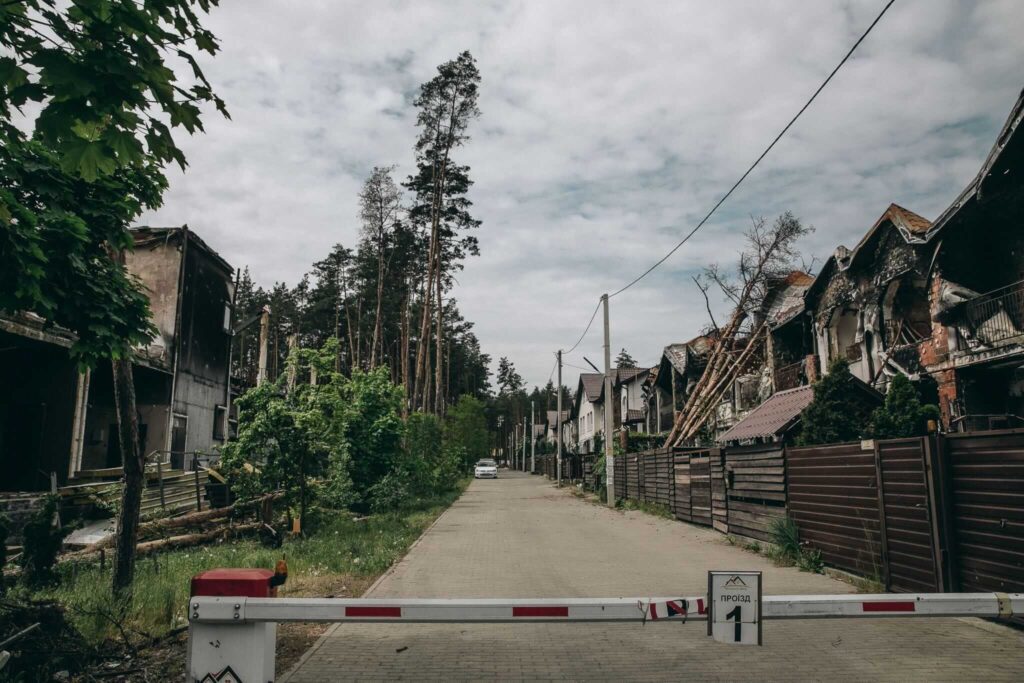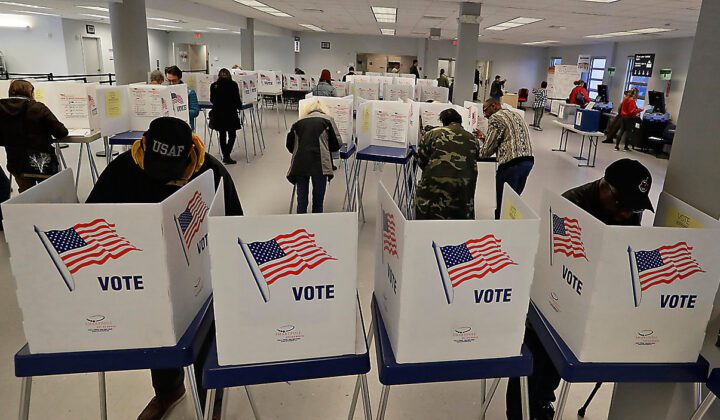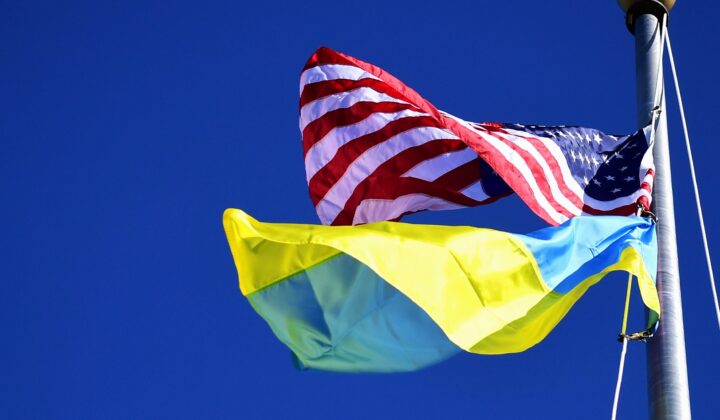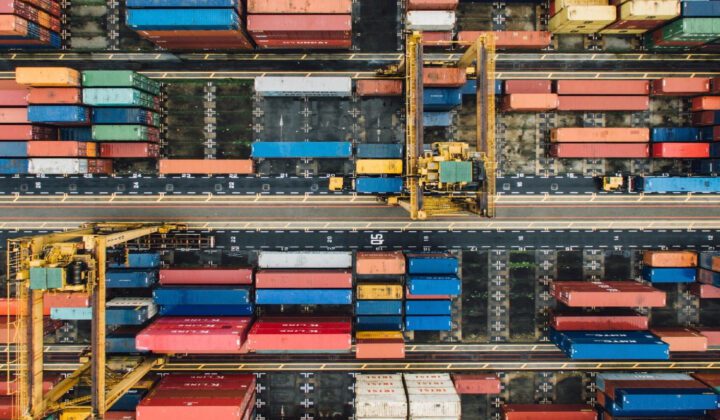“What is our task? To make Ukraine a fit country for heroes to live in.”
A Ukrainian official said that to me in Kyiv a few weeks ago, playing off of the famous quote from British Prime Minister David Lloyd George. It’s a fitting statement for a country struggling terribly to keep itself from being wiped off the map, yet at the same time building a resilient and proud nation in the hearts of every citizen. Amid the devastation and loss is a pervasive national dream for what comes next. In Ukraine, no one says “after the war”––only “after the victory.”
I recently returned from Ukraine where RDI led a delegation of Americans involved in supporting the war effort, including prominent writers and former government officials (including our very own Board President, Senator Heidi Heitkamp). Our goals in Ukraine were simple. We wanted to engage with the partners we fund to organize humanitarian relief efforts across Ukraine, identify the areas where we could help more, and increase awareness in the US of the latest in Ukraine. On each front, I’m happy to say that the delegation was a resounding success.
American Aid is Essential
Everywhere we traveled, the impact of Western humanitarian and military aid was palpable. Sometimes the effect was described during meetings with officials; other times we experienced it ourselves.
The starkest such experience occurred on our very first night. After multiple international flights, 17 hours on trains, and a full day of meetings, I returned to my hotel room and immediately fell asleep, dead to the world. I woke up the next morning to a phone overwhelmed with messages from friends, colleagues, and other delegation members asking if I was okay and wondering why I wasn’t in the bomb shelter.
I discovered that I had slept through the most significant Russian attack on the city in months. The Kremlin launched six hypersonic Kinzhal missiles, nine Kalibr cruise missiles, three Iskander ballistic missiles, and several Iranian-made Shahed attack drones. Moscow was pursuing a terror campaign against Kyiv with some of its most formidable weapons, but it came to remarkably little effect. No one in the capital died as a result of the strikes, thanks in large part to defense systems like the American Patriot missile system which intercepted Russia’s barrage and kept the people of Kyiv safe.
Everywhere we went, a similar story played out: Ukrainians are valiantly defending their country in their fight for survival with Western aid playing a key supporting role.
Western aid doesn’t only keep people safe in big cities; it is often the difference between someone becoming a refugee and being able to remain in their home. RDI has provided more than $7 million in humanitarian aid since the full-scale invasion in February of 2022, largely focused on keeping Ukraine habitable for everyday Ukrainians. Some of our key investments have been six water filtration units, each capable of providing enough clean drinking water for 30,000 people each day.
On our second day, we visited one of our water filtration units in Irpin. Walking through the city, made infamous for the terrible Russian war crimes committed there a little over a year ago, it was remarkable how dedicated Ukrainians were to maintaining some sense of normalcy. We saw children walking to school and met with their teachers; we heard from local officials who told us that safe drinking water from our filtration unit enabled local schools to function.
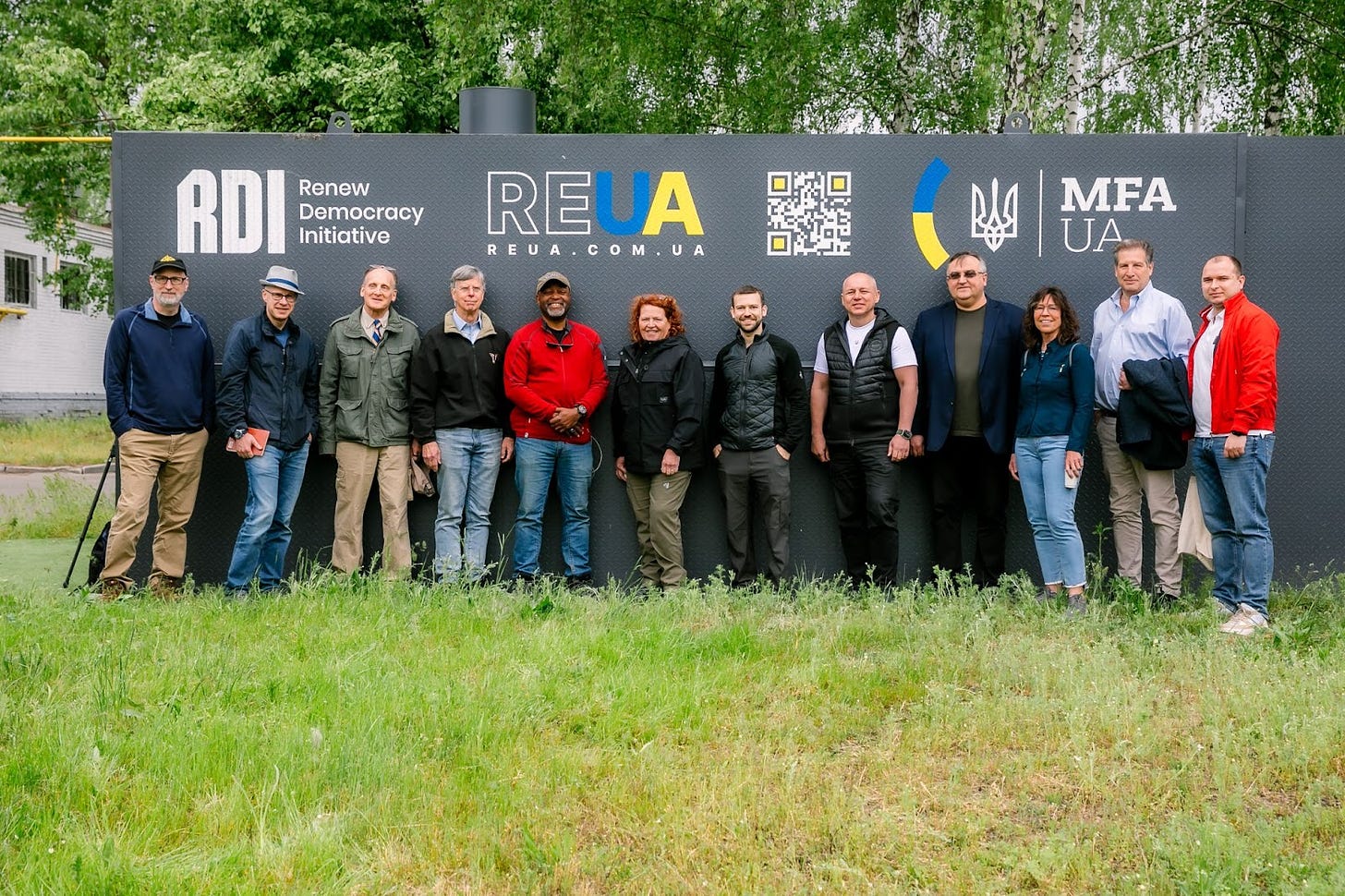
Of course, seeing the direct impact that something as simple as clean water can have on frontline communities was gratifying and humbling. But it also confirmed just how far Ukraine has left to go to achieve normalcy by any American standard.
Much work still remains, not only to keep Ukrainians safe, but also to get them the military capabilities they need to bring about a speedy conclusion to this war and defeat the greatest threat facing the Free World today––an expansionist Russia.
During our meetings, Ukrainian Foreign Minister Dymtro Kuleba, Defense Minister Oleksii Reznikov, former Defense Minister Andrei Zagorodnyuk, and Minister of Infrastructure Oleksandr Kubrakov all expressed their gratitude for what US military aid has helped Ukraine achieve on the battlefield while imploring the US to provide more in an effort to end this war as quickly as possible. David French, who was a part of our delegation, synthesized these discussions and outlined why Ukrainian officials were so adamant about receiving F-16s in a recent piece for the New York Times.
Ukraine Will Likely Become Our Most Powerful Ally in Eastern Europe
During our trip, it became evident that the US is developing a deep, long-term relationship with an increasingly western Ukraine that is battle-tested, capable, and motivated. The national mood is staunchly supportive of the United States, a quality that may become even more valuable as allies like France actively try to distance themselves from the US in favor of “strategic autonomy.”
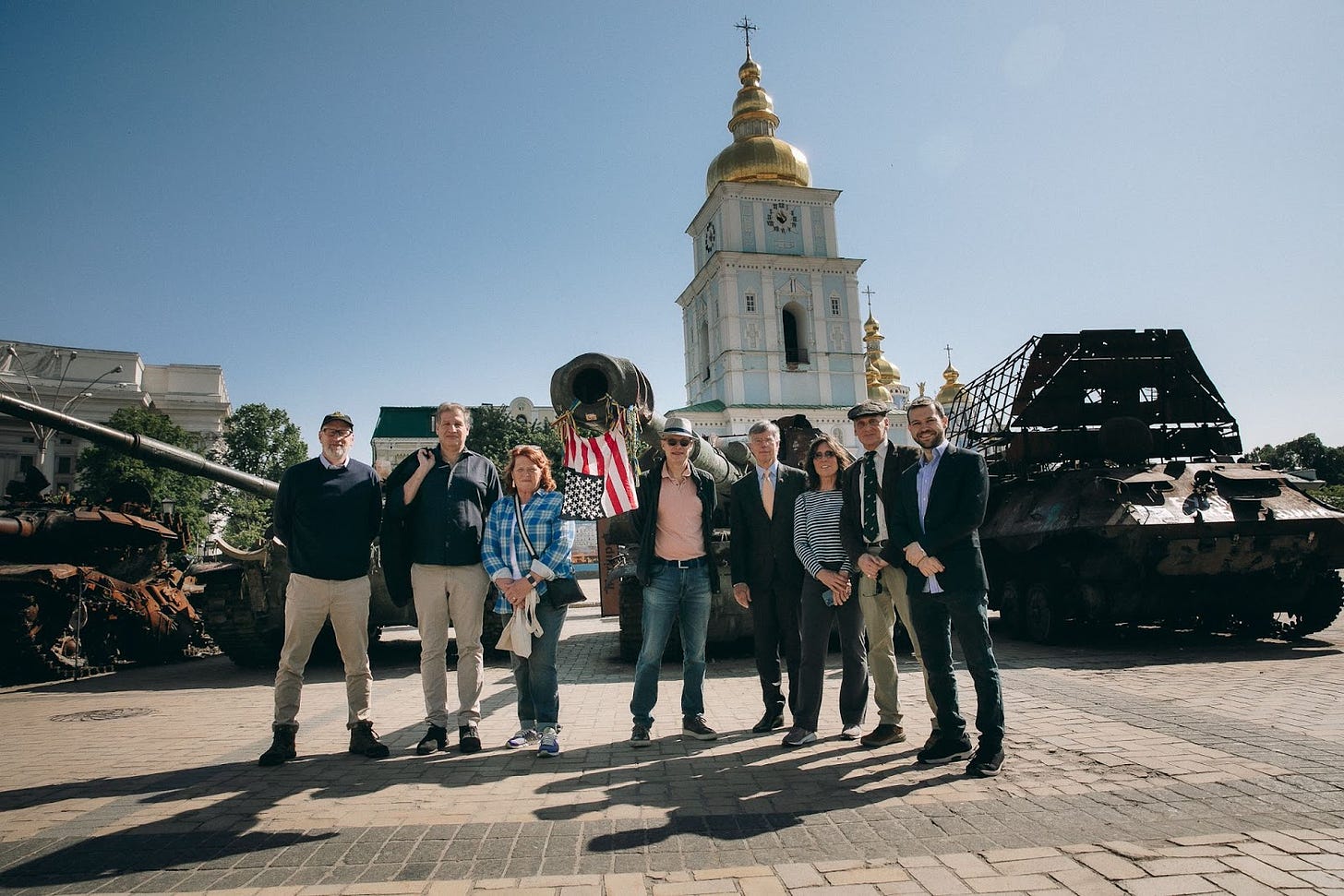
Yet our importance to Ukraine is also a responsibility. It is an unfortunate reality not lost on anyone that Americans’ attention could be the difference between life and death for too many Ukrainians. If we lose focus and our support wavers, the consequences could be catastrophic. That has contributed to a staggering level of interest in America. During a panel we hosted at the Diplomatic Academy, a young Ukrainian student asked us in impressive detail about the debt ceiling standoff and the consequences of a possible default. A debate that should really only be followed by Americans is headline news in Ukraine, where our domestic politics play a huge role in their survival.
Ukraine Suffers but Stands Strong
It is hard to put into words the collective suffering of the Ukrainian people. Near Kyiv’s city center is a wall almost half a kilometer long that displays photos of people killed during the war, stretching back to 2014.
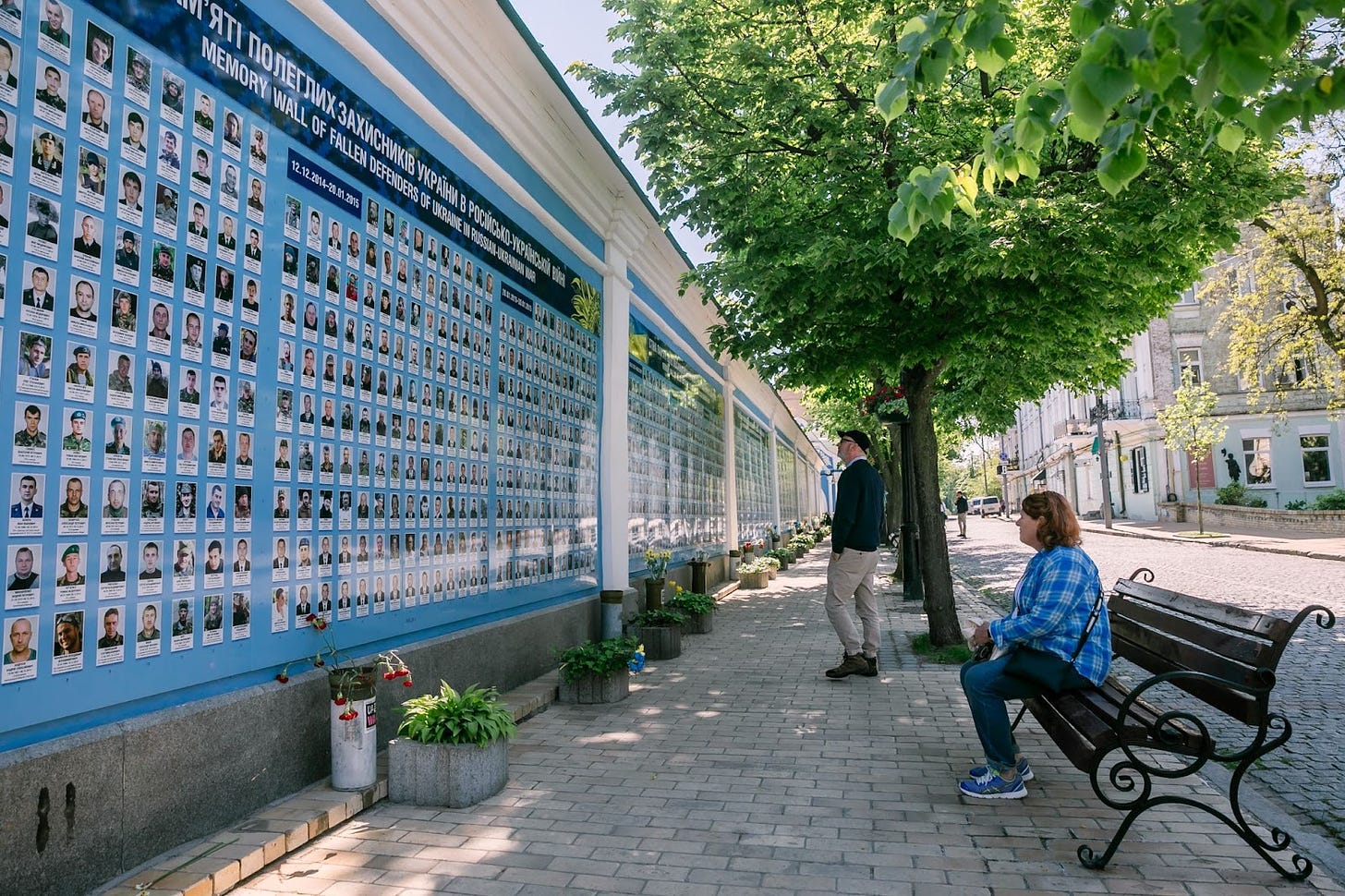
As you walk from 2014 toward the present day, men in their 20s and 30s are increasingly joined by men well into middle age, men who barely look older than boys, and an ever-increasing proportion of women. This wall is more than a memorial; it’s a symbol of how Russia’s war has turned all of Ukrainian society into one marred by conflict.
The devastation is immense and will take generations to heal. The World Bank estimates that Ukraine will need nearly $411 billion to repair the physical destruction. Each day, lives are lost and buildings are reduced to rubble. Nevertheless, life for Ukrainians hasn’t stopped.
Kyiv is a city that Putin, if given the chance, would send back to the Stone Age. But it is also a city very much alive with bustling coffee shops, bars, and restaurants that stay open despite the war. After civilians rush into bomb shelters to protect themselves from attack, they emerge to meet with friends and go about their lives. In the US, we often talk about work-life balance. In Ukraine, they talk about war-life balance. Ukrainians have decided that if it’s a free life they are fighting for, then they won’t hold off on living it.
Everywhere we went, cranes and construction crews were busy at work. Ukrainians aren’t waiting for victory or for more international aid to act on their dream of building a country even greater than before. Inspired by American freedom and democracy, they’re already building a nation free from Russian influence and corruption.
If you would like to support RDI’s efforts in Ukraine, please consider donating on our Ukraine humanitarian aid page. If you would like to donate to sustain RDI directly, please consider donating on our general donation page.

